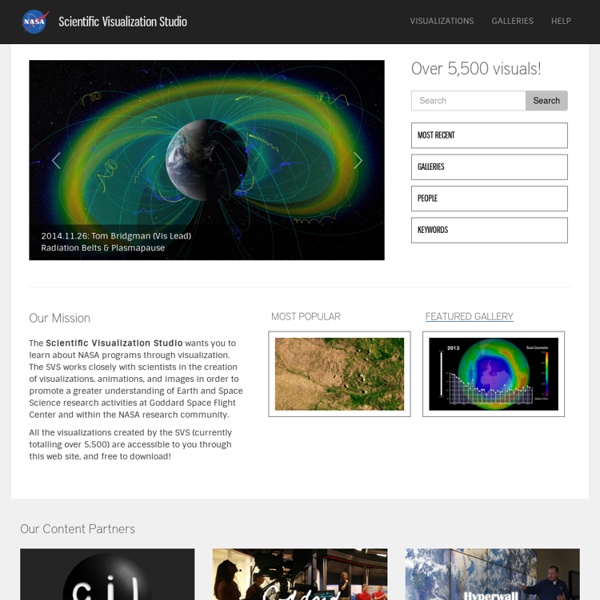



Visualization Explorer for the iPad - Home The NASA Visualization Explorer features visualizations, animations and images of our sun and the universe. Story topics include findings from NASA spacecraft exploring Earth, the planets and beyond. World premiere content delivered right to your fingertips produced exclusively for the NASA Visualization Explorer app.
ROSAT Re-entry ROSAT (short for Röntgensatellit, in German X-rays are called Röntgenstrahlen, in honour of Wilhelm Röntgen) is a defunct German Aerospace Center-led satellite X-ray telescope, with instruments built by Germany, the UK and the US. It was launched on 1 June 1990, on a Delta II rocket from Cape Canaveral, on what was initially designed as an 18 month mission, with provision for up to 5 years of operation. ROSAT actually operated for over 8 years, finally shutting down on 12 February 1999. ROSAT is expected to re-enter the Earth's atmosphere between October 21 and 23 2011. (from Wikipedia) Links "Live" Stats These sites do on demand calculations of satellite position based on an observer's location and recent satellite elements (via NORAD). Guide to viewing ROSAT in Orbit Before re-entry, as with other satellites, ROSAT will be visible from occasionally depending on your location, satellite position and time of day. Re-Entry Predictions Who does this? Current Estimation FAA issues NOTAM:! Twitter
Solar System Scope Asteroid Watch Recent News February 5, 2015NASA's Dawn spacecraft, on approach to dwarf planet Ceres, has acquired its latest and closest-yet snapshot of this mysterious world. › Read more January 27, 2015NASA's Dawn spacecraft has returned the sharpest images ever seen of the dwarf planet Ceres. › Read more January 22, 2015There has been a significant increase in the amount of water "pouring" out of the Rosetta mission's comet. › Read more › More news Next Five Close Approaches Average distance between Earth and the moon is about 239,000 miles (385,000 kilometers). The Asteroid Watch Widget tracks asteroids and comets that will make relatively close approaches to Earth. The Widget displays the next five Earth approaches to within 4.6 million miles (7.5 million kilometers or 19.5 times the distance to the moon); an object larger than about 150 meters that can approach the Earth to within this distance is termed a potentially hazardous object.
WFCAM Science Archive UKIDSS Galactic Plane Survey (GPS) Mosaic - DR7 The main window below displays a 6 billion pixel (1 arcsec pixels) mosaic of the GPS (centre: l=52, b=0 (109 > l > 0 ,360 > l > 355 and -2.5 < b < +2.5). Use the controls in the main window or the mouse (click&drag ) to move around the image and zoom in and out. Other versions: dr6 release dr4 release dr3 release dr2 release Details on the mosaic and its constructionWSA home Credits: The underlying blocks used to construct the mosaic were made using TERAPIX software, namely SWarp and STIFF (Emmanuel BERTIN).